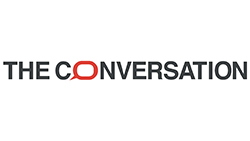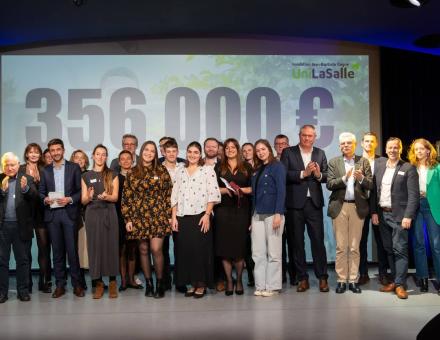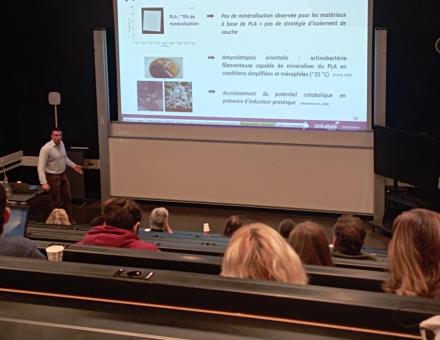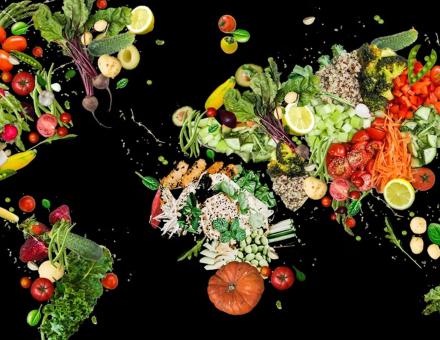When it comes to biodiversity and ecology, soil is often the forgotten element. And yet, it is essential not only for agricultural production, but also for the many services it provides. Better understanding it, with the help of new technologies, also means better protecting it.
Every year, France loses between 20 and 30,000 hectares of natural, agricultural or forested land under the pressure of human activity. This destruction of the soil endangers living organisms in general, and the human species in particular. Soil plays a fundamental role in plant production, renewing the nutrients needed for growth, sequestering carbon, regulating water, maintaining biodiversity, etc. The use of satellites can help to better preserve it.
Air and water have benefited for many years from national and European regulations and quality monitoring systems. The ground is far from having such an arsenal to protect it. Since July 2023, a European directive on soil monitoring and resilience has been under discussion. However, the only laws passed in France in recent decades have only taken into account the risks posed by contaminated sites.
However, the pressures exerted on soil have a variety of origins and are mostly linked to human activities: industrial development, urbanization and agricultural production are not the only consequences of soil contamination. They also lead to problems of soil sealing and compaction, which prevent rainwater from being absorbed. Taken together, these factors are leading to a loss of soil biodiversity, which accounts for a quarter of terrestrial biodiversity.
The role of soils is gradually being recognized
Awareness of these threats is growing. At national level, first of all, the Climate and Resilience Act of August 22, 2021 set the goal of achieving zero net artificialisation by 2050. It aims to take better account of the environmental consequences of new construction and surface development. In addition, since 2000, the soil quality measurement network has been assessing and monitoring the quality of French soils over the long term through sampling.
At continental level, in 2009 the European Union set up the LUCAS (Land Use and Coverage Area Frame Survey) monitoring network, designed to monitor soil use and coverage. However, LUCAS was mainly concerned with the physical and chemical composition of soils; the description of biodiversity was not taken into account. This oversight was corrected in 2018: That year, LUCAS included data on soil biodiversity, including bacteria, fungi, arthropods, earthworms, etc., in its search for information. Finally, at global level, on September 25, 2015, a UN resolution included soil protection as one of the elements of the 2030 Agenda for Sustainable Development.
This new consideration for soils can be paralleled by a renewal of agricultural practices. Conventional farming systems using large quantities of chemical inputs (fertilizers, herbicides, pesticides) require physical and chemical soil data. Quantifying organic carbon, pH (which determines the acidity of a soil) and the availability of nutrients such as phosphorus is useful information for agronomic performance and yield purposes.
But these indicators are no longer appropriate for farms in transition to agroecology. Indeed, the priority of such farms is to promote a biological balance in the soil. This is consistent with the growing awareness of the various functions performed by biodiversity: renewal of plant nutrients, regulation of pathogens, transformation of carbon in the soil, stability of soil structure... However, this awareness is struggling to gain ground in the minds of the general public. It's primarily the monetary value of land that strikes them.
New technologies to support the transition to agroecology
The European Union has launched a number of projects to highlight the many other values of soil for life in general, and human life in particular. One of these was to create a decision-making tool called Soil Navigator: its role is to quantify soil functions (agricultural and forest biomass production, water purification and regulation, carbon sequestration, habitat for diversity, nutrient cycling) on a European scale. However, this tool relies on knowledge of a certain number of descriptive soil variables, which may be expensive or difficult for farmers to acquire.
Tools such as sensors and satellites can help farmers make the best choices in terms of fertilizer, pesticide or herbicide use. Major space groups, companies involved in the Internet of Things and agricultural equipment manufacturers are contributing to the development of tools to support the ecological transition.
As early as 1985, the European earth observation program Copernicus helped build the CORINE Land Cover (CLC) database. It provides an inventory of land use: towns, forests, crops, etc., thanks to the visual interpretation of satellite images. Today, the Copernicus program relies on the deployment of Sentinel satellites. The information they provide on land cover and land cover changes, land use and vegetation status are also invaluable tools for managing the Common Agricultural Policy.
More and cheaper data to help farmers care for their soils
Today, data is provided by more and more media (satellites, airplanes, drones, tractors...) and is therefore ever more plentiful. And it's not always necessary to call on space or the sky to obtain it: sensors placed directly in fields, on tractors or on agricultural machinery provide farmers with detailed information on the acidity, temperature and humidity of their soil. This enables them, for example, to predict the weather conditions for the coming days and weeks, and thus take the necessary steps to protect their crops and ensure their yields.
Remote sensing is widely used in agriculture, particularly for monitoring vegetation. Drones and satellites provide recommendation maps that can be connected to farming equipment, enabling inputs to be adjusted, diseases to be detected early and yield maps to be created. These aspects, particularly soil physico-chemistry, have been extensively studied in the literature.
On the other hand, the study of the biological functioning of soils, as well as the relationships between management practices and their consequences on ecosystem services, have received little or no attention using remote sensing. These issues linked to soil and remote sensing are currently the focus of projects on a national scale, such as the SolNum project led by UniLaSalle within the H@rvest Alliance.
In 2019, the European Commission presented a plan: the European Green Deal, which aims to reduce greenhouse gas emissions by at least 50% by 2030. A growing number of new tools are being offered to European institutions and farmers, among others, to help them achieve this goal. Digital solutions and mathematical methods for processing images obtained by observing the Earth from satellites, drones or simply tractors, can help bring us closer to this goal. Although we still lack the experience of using these new tools, we can hope that they will contribute to a better understanding of the soil, and thus to its protection.
In the field of soil knowledge, the use of space and digital technology also provides farmers with tools that ultimately cost less. An annual subscription to a database represents a much smaller investment than regular drilling or sampling and analysis. What's more, the prodigious amount of information it puts at their fingertips enables them to make relevant agronomic decisions. Spatial and digital technologies are truly new tools that can be mobilized to protect soil biodiversity.
This article benefited from the support of Jean-Marc Pitte, journalist and scientific mediator. We would like to thank him for his help in popularizing this reflection.
About the authors
Isabelle Trinsoutrot-Gattin, director of the AGHYLE research unit, UniLaSalle
Elsa Edynak, in charge of international projects on the ground, UniLaSalle
Jérôme Dantan, associate professor in computer science, UniLaSalle







